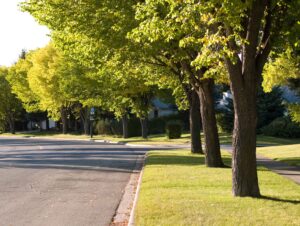A crucial climate crisis declaration was signed by countries all over the world to save forests over the next decade. Is it possible for them to pull it off?. Since the last ice age, the globe has lost a third of its forest, and deforestation and forest degradation are still responsible for 15% of global greenhouse gas emissions. Now, a new vow announced last month at the COP26 climate conference in Glasgow hopes to improve this grim picture. Signed by important forest nations, the Glasgow Leaders’ Declaration on Forests and Land Use aims to decrease deforestation to zero by 2030.
The declaration has sparked expectations that the globe will witness a renewed push to stop deforestation’s terrible effects. “It would be a tremendous achievement if we could bring deforestation to zero,” says Simon Lewis, a global change science researcher at the University of Leeds and University College London. “Both in terms of carbon and biodiversity and conservation, because tropical forests are home to two-thirds of the world’s species. “However, the vow comes with severe limitations, such as the fact that such pronouncements have been made before—often to little result.
Related: Send Your Love to Nature and Life
What is the Purpose of the New Pledge?
It was revealed in early November at COP and signed by 141 countries (about 72 percent of the world’s population), including Brazil, Indonesia, and the Democratic Republic of Congo, three of the four countries with the largest tropical forest in 2020. The countries have pledged to “act together to halt and reverse forest loss and land degradation by 2030,” as well as to “provide sustainable development and promote inclusive rural transformation.” Importantly, unlike many other pledges, it does not limit this to “illegal” deforestation, implying that it is seeking to include all deforestation, not simply logging or land removal in violation of local laws.
The pledge is backed by $12 billion in government funds and $7.2 billion in private capital. $1.7 billion will be used to support indigenous peoples’ and local communities’ land rights, as well as their roles as forest defenders. However, Lewis claims that there is still some confusion regarding whether the vow means “zero” or “net zero” deforestation. There would be no loss of old growth trees wherever if there was no deforestation. However, because of net zero deforestation, old growth forests could still be removed if new forests were planted at the same rate. Lewis notes, “The former is far better for carbon, and also much better for biodiversity.”
What Effect Might It Have?
Ending deforestation has a huge impact on everything from climate change and water security to wildlife and indigenous cultures’ well-being. According to a study by the World Resources Institute (WRI), stopping forest loss by 2030 in all pledge signatory countries would save 33 million hectares of forest, nearly the size of Malaysia. It would also prevent 19 gigatonnes of carbon dioxide equivalent (GtCO2e) emissions, or twice China’s yearly emissions. “It would make a significant contribution to overall emissions reduction,” Adriana Ramos, coordinator of politics and law at Brazil’s Instituto Socioambiental (ISA), argues. “When Brazil, for example, cut emissions due to deforestation, it was the world’s largest drop in emissions.” Deforestation reduction is the cheapest and, in my opinion, practically the easiest technique to reduce emissions.” Forests also serve the climate change agenda in other ways, she continues, including providing carbon storage and assisting in the maintenance of regional climate equilibrium. The Amazon plays a critical role in managing the continent’s microclimate.
Can We Put Our Faith in This Promise?
However, some are sceptical about how effective this vow will be in slowing deforestation. To begin with, countries may have signed a grand declaration, but it does not specify how they intend to attain the goal or how the agreement’s implementation would be monitored. There are also no plans in place for what will happen if countries miss the deadline. “If world leaders are serious about ending deforestation, they must back up their promises with a commitment to enact strong and binding national legislation that makes it illegal for companies and financial institutions to fuel deforestation,” says Jo Blackman, Global Witness’s head of forest policy and advocacy. According to Lewis, the promise also says nothing about dealing with the demand side of deforestation’s drivers. “If you don’t reduce demand for things originating from rainforest lands, someone else will.” According to Lewis, if the Glasgow Declaration is followed, it could encourage deforestation to countries who have not signed up to it. “So you might not see a difference in deforestation globally, but you might see it move.”
Many pointed out that a similar declaration made in New York in 2014 didn’t get very far. This aimed to cut tropical deforestation in half by 2020 and eliminate it entirely by 2030, but deforestation has actually increased since then, peaking in 2020. According to a recent assessment on the New York Declaration, most forest nations have failed to include the targets in their most recent UN climate promises. However, the new commitment differs from the previous one in some areas. This time, a lot more countries have joined up, and there’s also finance and a set of policies and measures to go along with it, according to Lewis. “It’s more sophisticated than the New York Forest Declaration. “It’s also notable that the vow was mentioned in the second week of COP26 in a key US-China climate declaration. Both countries stated that they plan to combat illegal forestry by “actively implementing their respective rules on unlawful imports.”
“I’ve never seen China announce [on the international stage] that it intends to do anything about deforestation,” Lewis says. “China is going through a forest transition, where it is adding forest rather than eliminating it, yet it has a big impact on the rest of the world.” Last month, the European Commission also produced a draught rule aimed at halting worldwide deforestation caused by EU consumption of soy, beef, and palm oil. One caveat comes from Indonesia, which appeared to back out of the agreement soon after it was signed. The country’s vice foreign minister, Mahendra Siregar, denied that the key plank of zero deforestation by 2030 was even part of the agreement, arguing that the pledge did not mean “zero deforestation,” but rather achieving no net loss of forested land.
While no similar mutterings came from Brazil, Ramos is doubtful of the country’s devotion to the agreement. “Since the beginning of the government, Brazil has made several pledges [against deforestation],” she says. “However, there is no indication in Brazilian politics that any strategy to truly limit deforestation is being implemented.” We are really concerned that Brazil has merely stated this in order to be in the COP photo, but not on an honest basis. Brazil’s deforestation rates have reached their highest level in 15 years, according to figures released shortly after COP26.
Related: 10 Most Stunning Black Flowers on the Face of the Planet
How Can the Objectives Be Attained?
Although the vow lacked specifics, much is already understood about how to stop deforestation. Brazil’s dramatic drop in the late 2000s, for example, could serve as a model. “We know what actions the policy needs to take,” Ramos explains. She thinks the first step is to impose stricter controls on individuals who are unlawfully deforesting. However, it also entails growing support for more sustainable agriculture production and other new economies based on forest preservation, such as community-based tourism and sustainable forest product collection. The $1.7 billion in financing to assist indigenous and local land rights drew a lot of attention.
According to Ramos, this money must reach the territories in an independent manner for indigenous peoples, or else state programmes or large NGOs will have more authority within the territories than the communities themselves. Because indigenous peoples are considerably better at managing trees in a sustainable fashion, research has demonstrated that focused local support is a cost-effective method to mitigate climate change. “It’s critical to understand the role that these people play in keeping the forest, and the importance of supporting the maintenance of their territory,” Ramos says.








